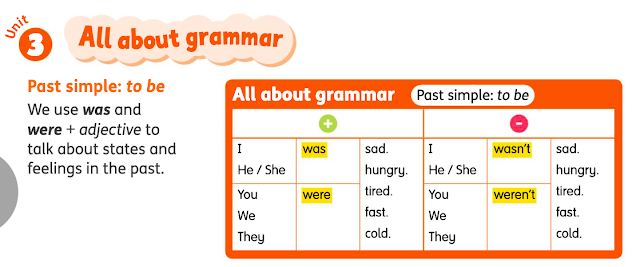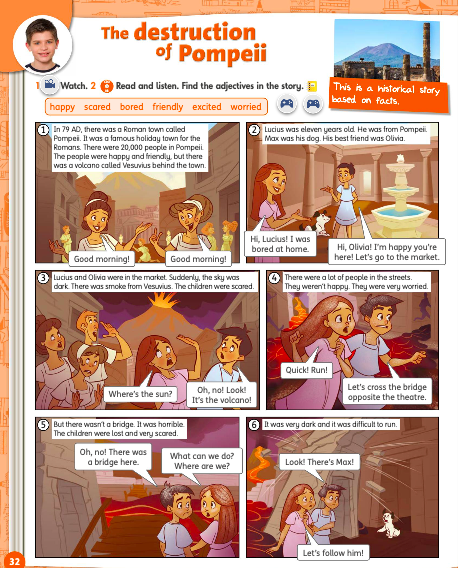UNIT 3: GETTING AROUND TOWN
VOCABULARY
VOCABULARY
PLACES AROUND TOWN – SITIOS EN LA CIUDAD
bus station – estación de autobuses
hospital – hospital
hotel – hotel
museum – museo
post office – oficina de correo
shopping centre – centro comercial
square – plaza
supermarket – supermercado
theatre – teatro
town hall – ayuntamiento
BUILDINGS – EDIFICIOS
palace – palacio
tower – torre
train station – estación de tren
TV studio – estudio de televisión
Kahoot Vocabulary: https://create.kahoot.it/details/4eb55a38-0f03-4d19-a6cf-1f8f7c4f7395
STORY with new vocabulary. Click here to watch the story:
ADJECTIVES – ADJETIVOS
bored – aburrido
excited – emocionado
friendly – amistoso
happy – feliz
scared – asustado
worried – preocupado
GRAMMAR
Review: THERE IS / THERE ARE – HAY (singular / plural)
Usamos there is (singular) y there are (plural) para decir que hay algo.
GAMES TO PRACTICE THERE IS AND THERE ARE
PAST SIMPLE: there was / there were
El verbo “there was” y “there were” es la forma en pasado de “there is” y “there are”, que se construye con there + el verbo to be.
There is y there are se utilizan para decir que hay algo en presente (there is a cake in the fridge – hay una tarta en la nevera), por lo tanto, la forma en pasado de este verbo significa había (there was a cake in the fridge – había una tarta en la nevera).
AFIRMATIVA, SINGULAR:
there was a school – había un colegio
AFIRMATIVA, PLURAL:
There were some squares – había varias plazas
NEGATIVA, SINGULAR:
There wasn’t a sport centre – no había un centro deportivo
NEGATIVA – PLURAL:
There weren’t any shopping centres – no habían centros comerciales
* Cuando una frase es afirmativa y plural utilizamos SOME para decir varias, si no sabemos el número exacto.
Además, en las frases negativas y plural, usamos ANY, para decir ninguna.

PAST SIMPLE “to be”: «was/were»
Cuando se necesita hablar del pasado en inglés, la forma principal que toma el verbo es el pasado simple (simple past). En pasado simple, el verbo to be se escribe de dos maneras diferentes, éstas son «was» y «were». Ambas significan «era» o «estaba», y su uso dependerá del sujeto de la oración y su significado.
| PRONOUN | AFFIRMATIVE | NEGATIVE |
| I | I was | I was not – I wasn’t |
| YOU | You were | You were not – You weren’t |
| SHE | She was | She was not – She wasn’t |
| HE | He was | He was not – He wasn’t |
| IT | It was | It was not – It wasn’t |
| WE | We were | We were not – We weren’t |
| YOU | You were | You were not – You weren’t |
| THEY | They were | They were not – They weren’t |
We were worried. - Nosotros estábamos preocupados.
She wasn’t happy. - Ella no estaba feliz.
Yo estaba en la escuela ayer. - I was at school yesterday.
Tú tenías diez años de edad el año pasado. - You were 10 years old last year.
Emma y Jane eran estudiantes, ahora son doctoras. - Emma and Jane were students, now they are doctors.
Estaba lloviendo hace un rato. - It was raining a while ago.
- To use the unit language in a final project.
- To write and present a project about buildings in my town in the past and present.
- What's the tittle of Jack's report?
- What information about the past does he give?
- What do you think of Jack's report? I think it's...
Activity 5: Complete this graphic organizer with the information you found:











Comentarios
Publicar un comentario